Coppingers Court Ruins – Our Journey Into Ireland’s Past
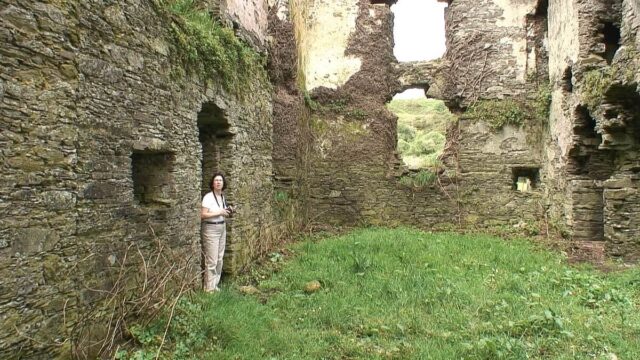
Coppingers Court Ruins looks more like a haunted house than a former Grand Stronghold. But it was that pervasive cryptic appeal that had Bob and I veering off R597 in County Cork, in search of its exact location.
The sunny day saw us driving along the scenic coastal road, that still allowed staggering speeds of 100 kph, en route to Killarney. Our intention was to check out Drombeg Stone Circle near Clonakilty, but our progress was interrupted when we spotted, on the far side of a valley, the ruins of a manor house or castle. Bob, letting serendipity rule the day, turned down a well-worn side road in search of the intriguing ruins. We had no idea where we were going, but sometimes, the unexpected makes for a more interesting experience.
In a perfectly pastoral setting, we finally located the derelict structure. It was kind of eerie poking around it as it was just me and Bob tiptoeing through the long meadow grasses with not a single sole in sight. It became apparent to us that a farmer was using these noble-appearing ruins to shelter his livestock as the now gaping holes in the ground floor walls were gated with rudimentary wooden barriers. Floors have given way to the bare earth that was sorely trodden and muddy from much hoof activity.
Surrounded by farmer’s fields now, with a group of cows grazing in its shadow, stand the decrepit stone walls that once supported a thick growth of ivy.
Nearby pastures were sectioned off with stone fences, and both the cows and one forlorn horse were passing the day there. Their curiosity had them coming to the edge of their enclosures to see what we were about.
It wasn’t until after Bob and I left these ruins behind that we became enlightened as to their sordid past. Continuing down the narrow dirt road, we came across a local couple walking their dogs, and they were eager to share the history with us. It turns out that the impressive multi-sided, four-storey house was built by Sir Walter Coppinger shortly before 1616. The beautiful location where it is found is the fertile Ballyvirine Valley west of Rosscarbery.
Coppinger was a well-known money-lender who planned to build a town at his Coppinger’s Court location because of the proximity to the harbour at Millcove. This was in direct conflict with locals who preferred the traditional ways of rural life. Coppinger, however, lorded it over the district, and hung anyone who disagreed with him from a gallows on one of the gable ends of the Court. Perhaps that is why the ruins seemed so ominous.
Coppinger’s plans went awry during the 1641 Rebellion when his manor house was ransacked and burned. The unfortunate event was actually due to Sir Walter’s own waywardness. Before leaving his home to settle a dispute with a neighbour, Sir Walter instructed his servants to set the house afire if he failed to return by a certain hour. Coppinger won the dispute, then settled into celebrations with ample food and wine. You can imagine his horror when, approaching his manor at a later hour than expected, the whole edifice was ablaze.
As a testament to the solid construction of Coppinger’s Court, still, today, two sets of triple chimney pots and another single chimney stack rise from the blackened rubble. Well-preserved turrets and parapets have endured the wear and tear of the centuries, and the many corbel-supported bartizans all combine to suggest the once opulent structure that dominated the valley.
As Bob and I explored the various chambers that are now totally exposed to the elements, we remarked that the walls were once wondrously filled with large windows. In fact, the mullions still remain in some of the top-floor windows of the once grand residence.
Coppinger’s Court was an impressive estate with a reputation for extravagance.
It is reputed to have had one window for every day of the year, a chimney for every week, and a door for every month. With the multiple wings that constituted the building, it is quite possible that that is true.
Because Sir Walter Coppinger is remembered as an awful despot, it makes one wonder if any ghosts haunt that abandoned building.
Bob and I sensed no spirits as we lingered in the place, just an overwhelming pervasiveness of loss and loneliness. The only sounds to disturb the unsettling silence were those of some startled doves.
Having satisfied our curiosity, it was time to motor on down the narrow dirt road. Our serendipitous interlude had done wonders for our imaginations. No wonder Sir Walter was inspired to build his dream home in the Ballyvirine Valley. The countryside is most beautiful there. As we took our leave, Bob and I were compelled to take one last glance at the forlorn Coppinger’s Court. It seemed as though someone was watching us.
Frame To Frame – Bob and Jean

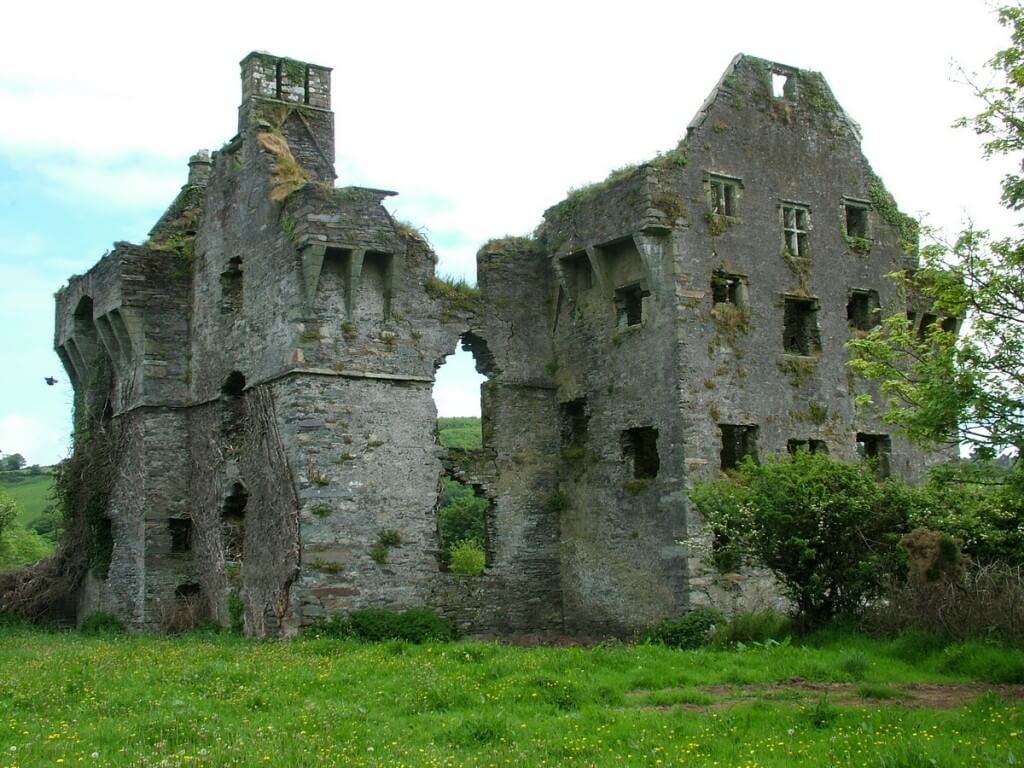
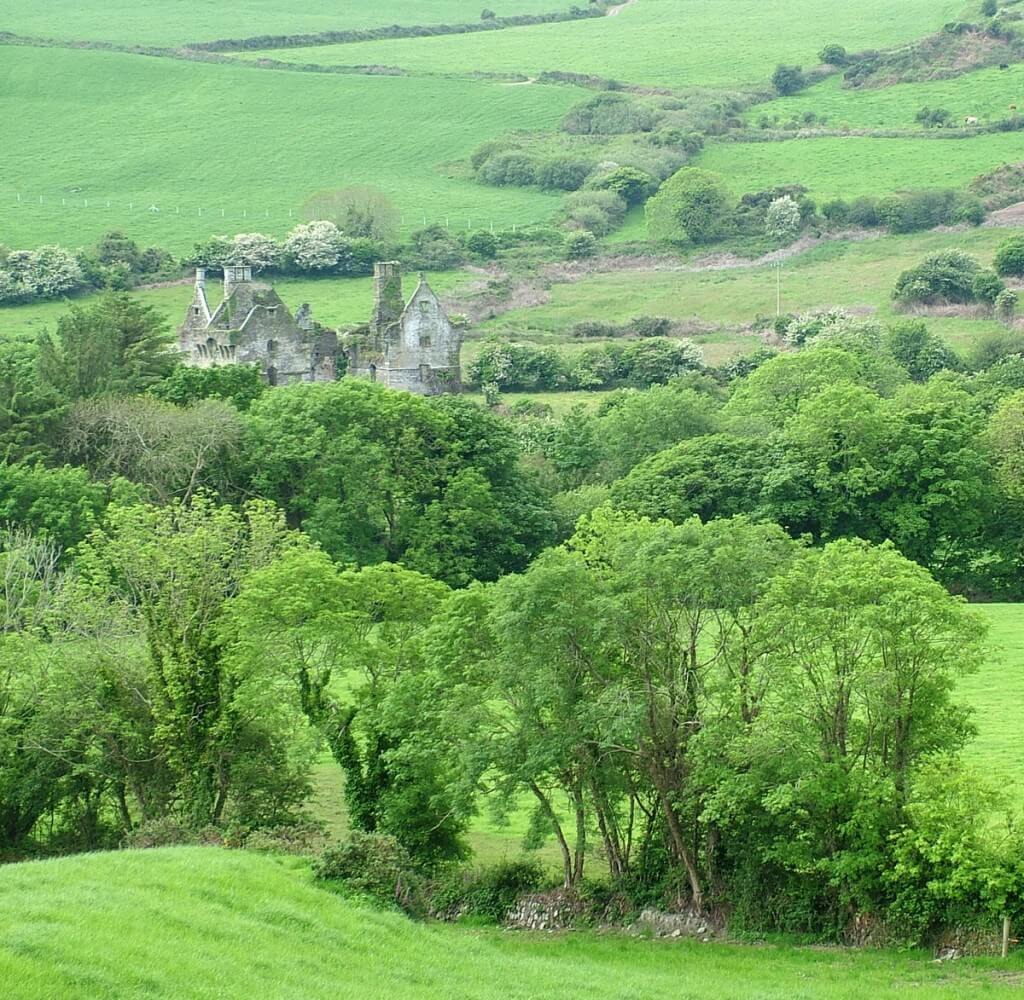
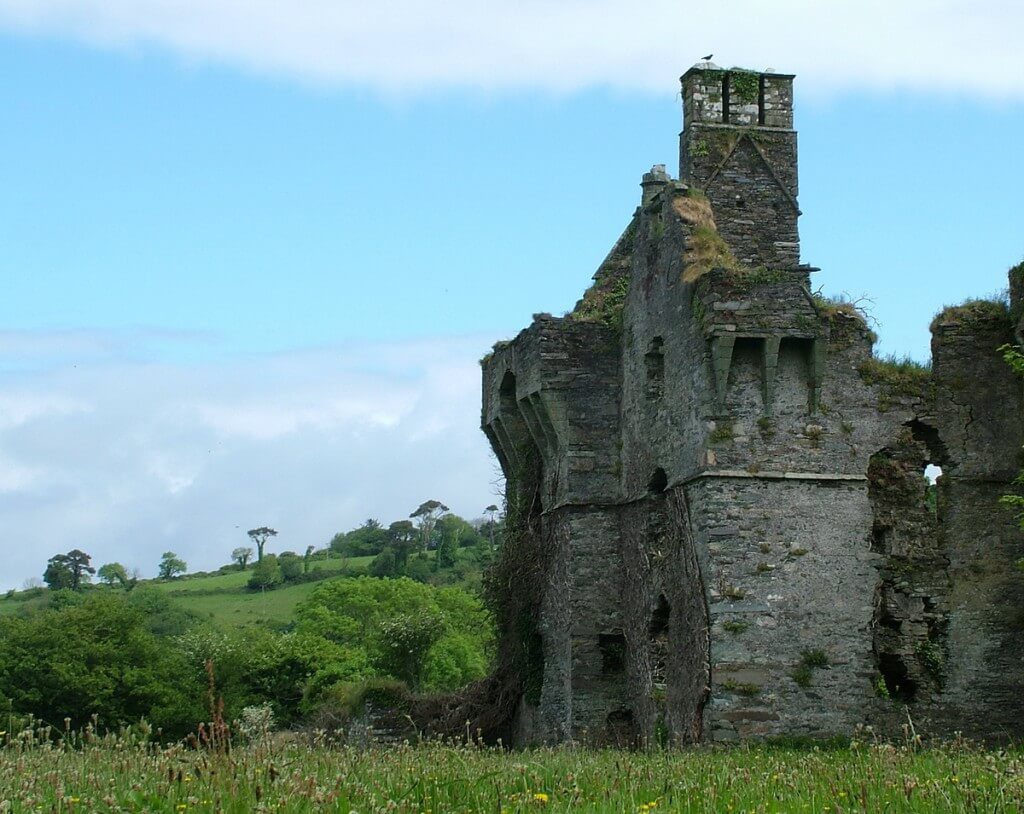
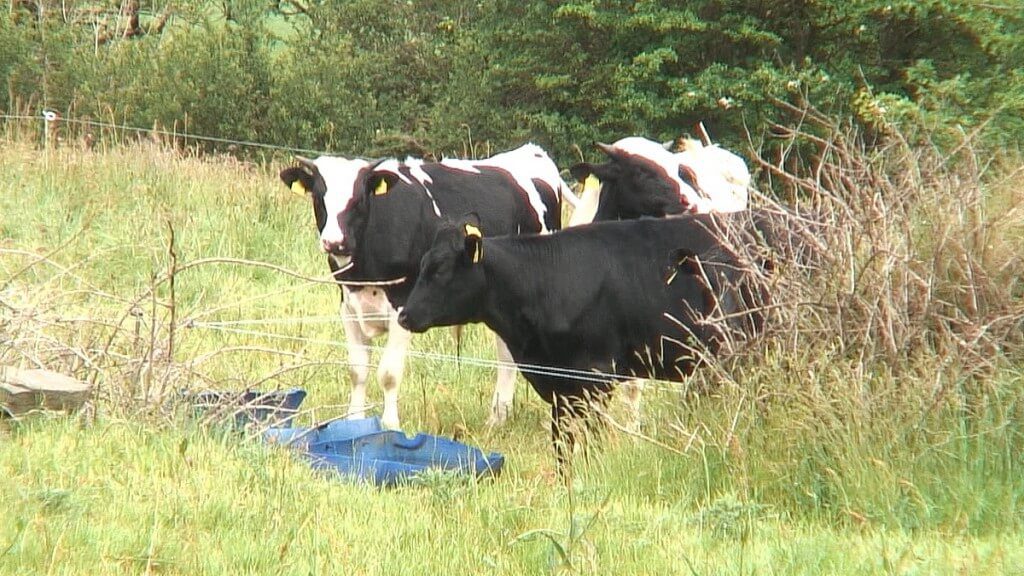
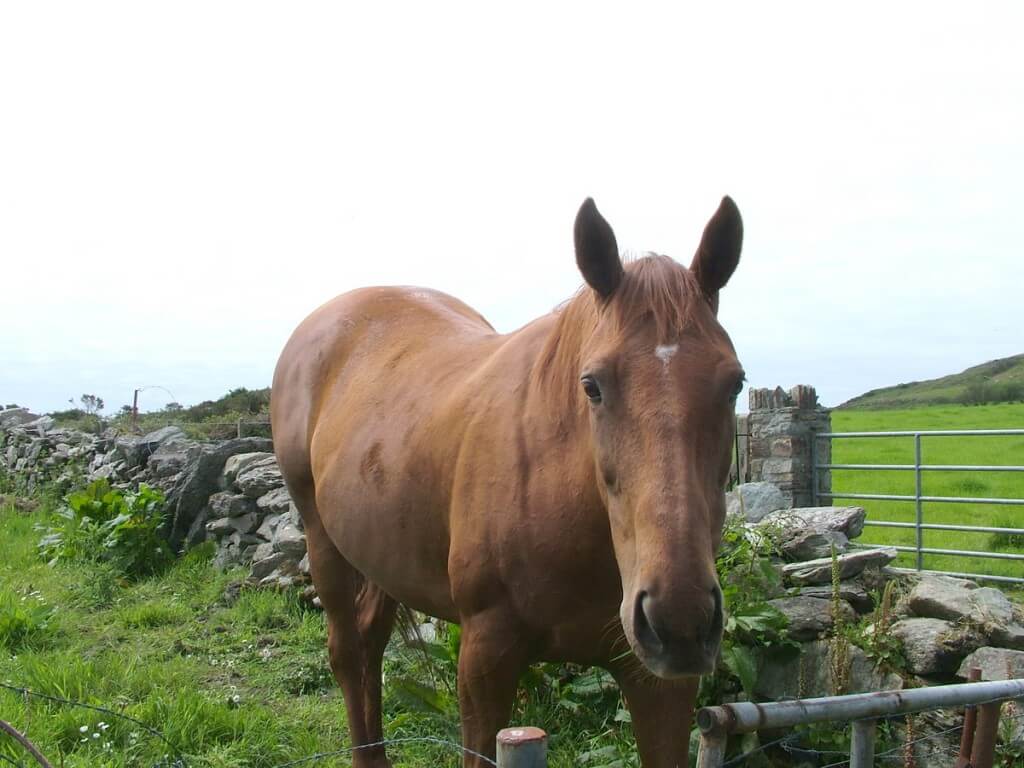
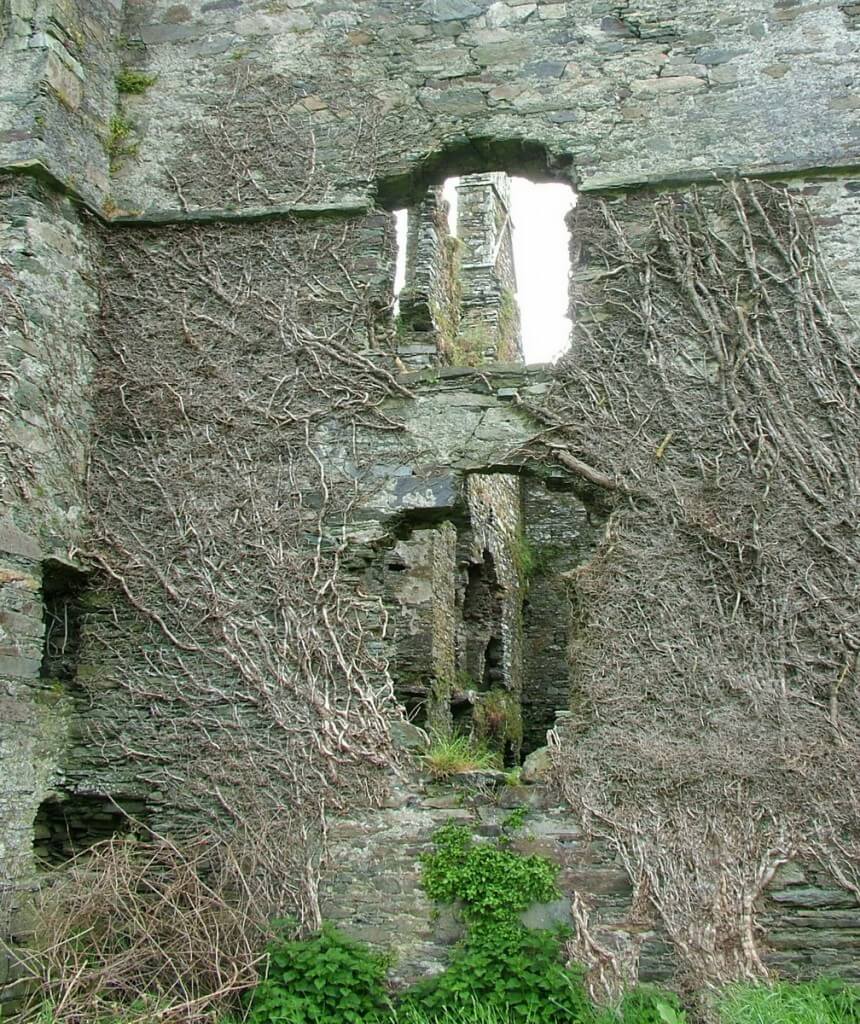
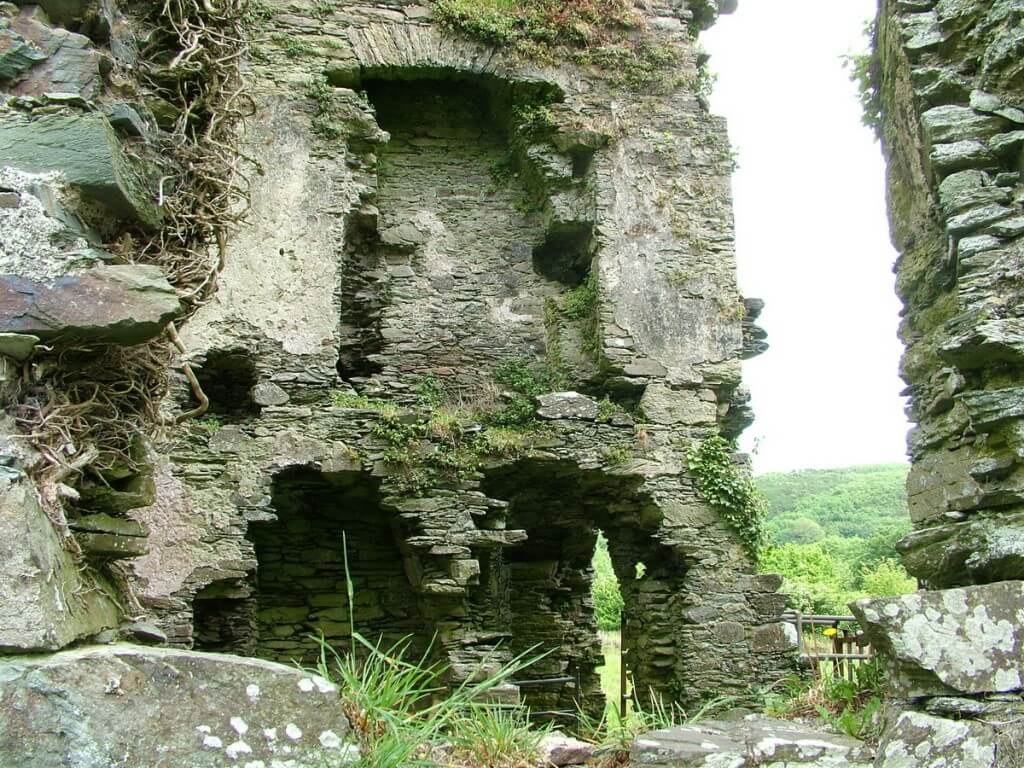
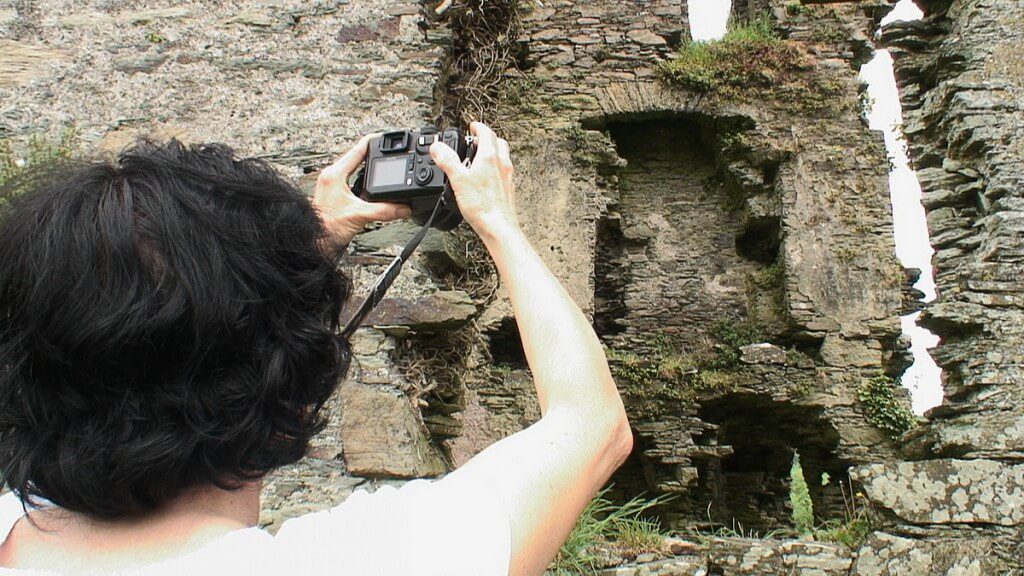
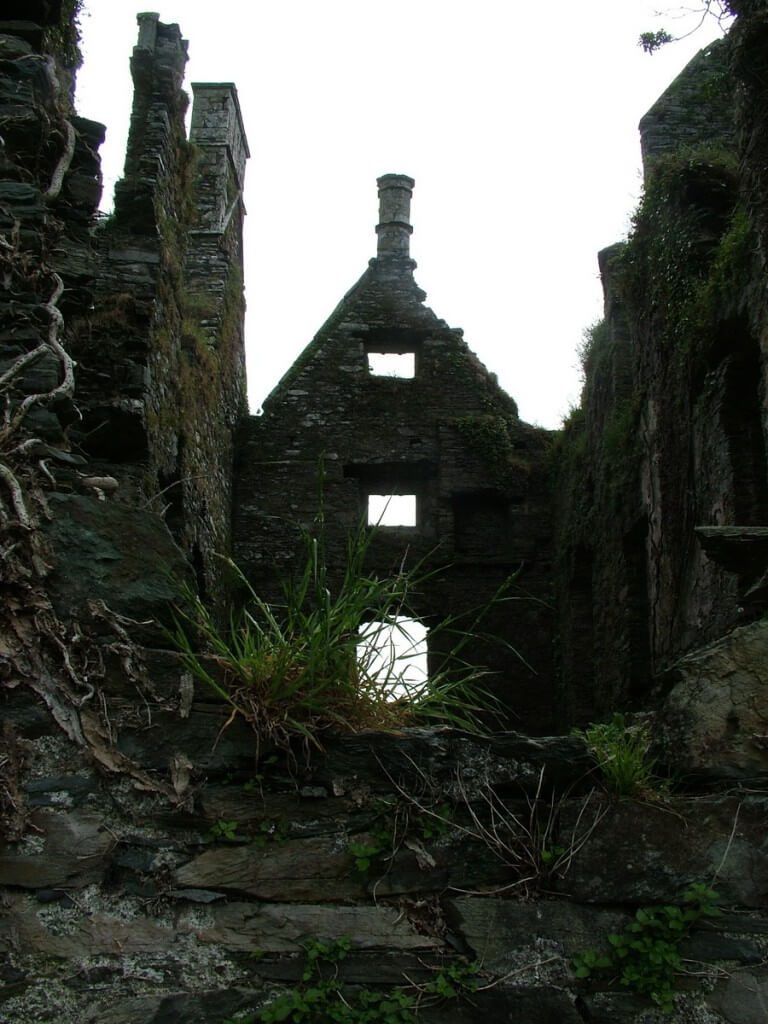
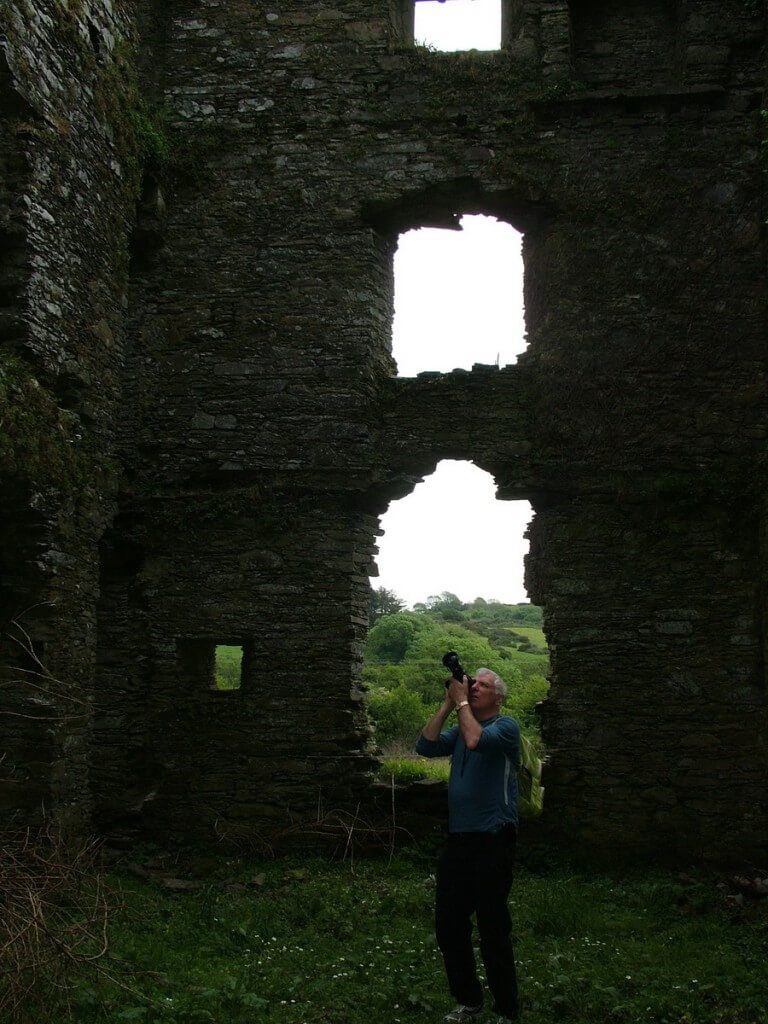
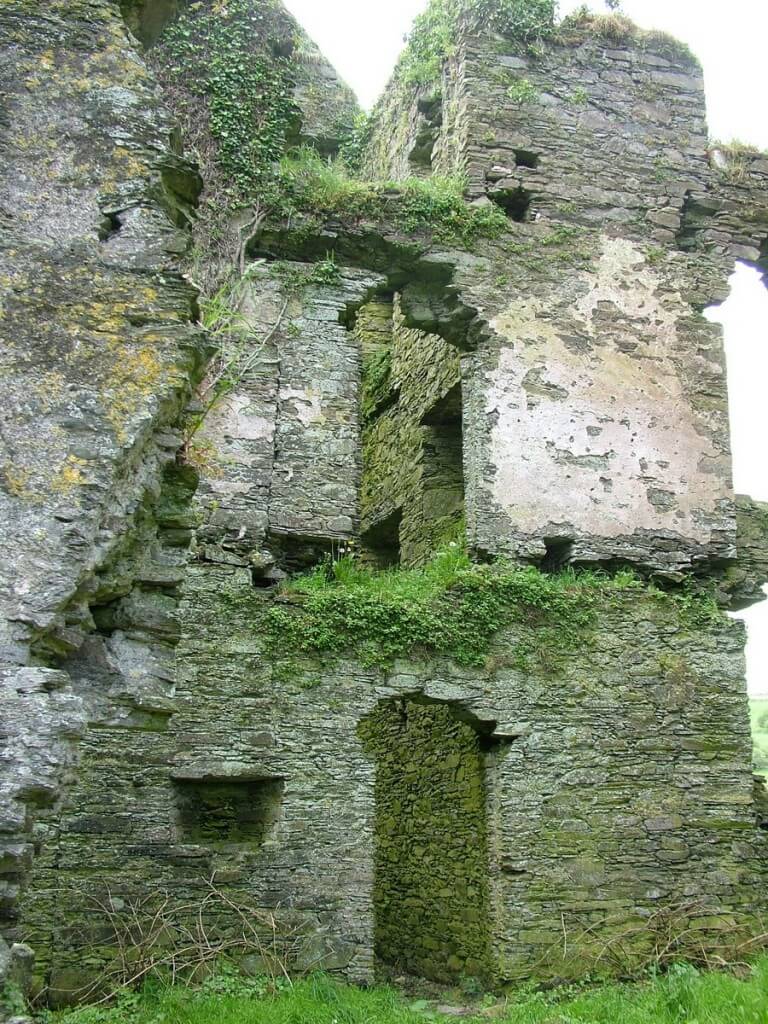
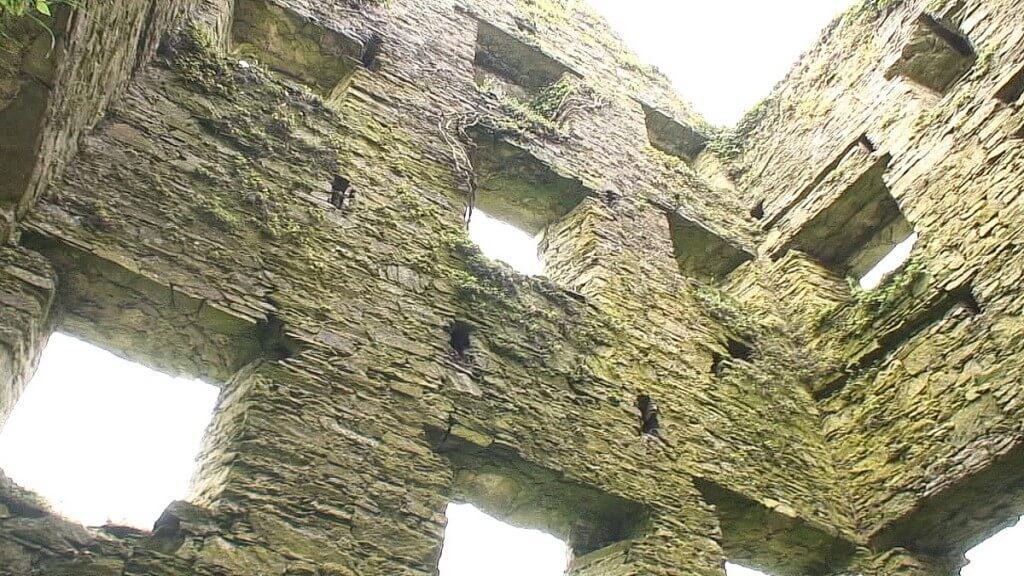


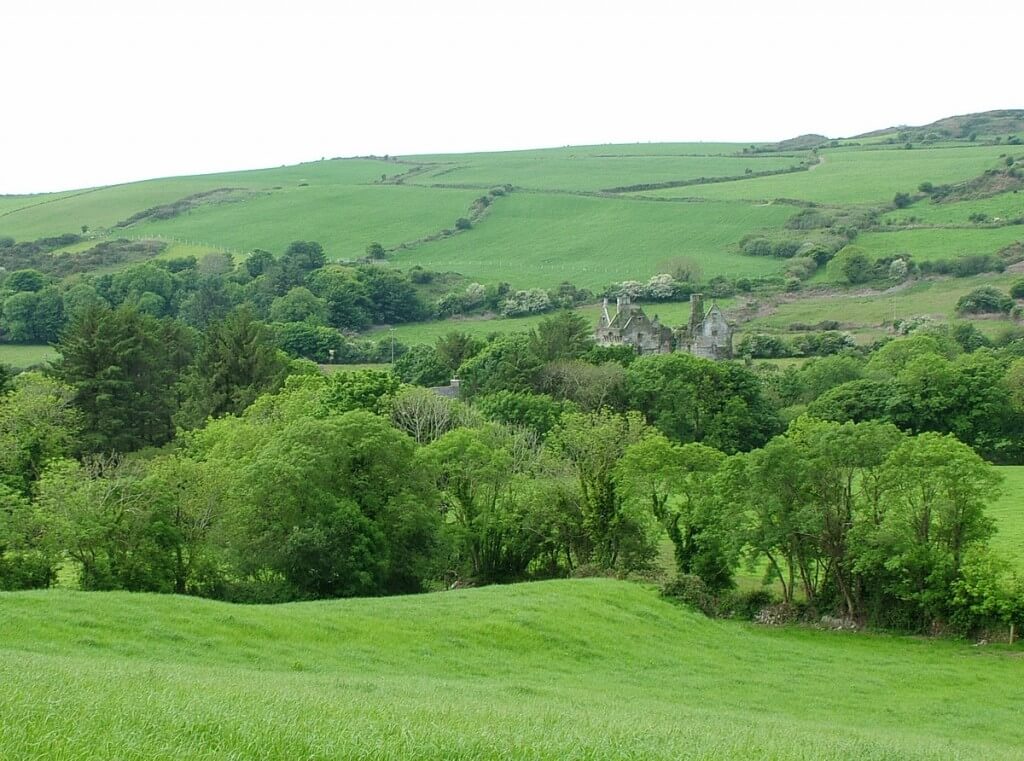
We are going to Ireland next week. We are taking a private tour. We had wanted to visit the Coppinger Castle ruins as my son-in-law is a Coppinger and a descendant of Walter Coppinger. There are records showing that Walter died in 1639, a couple years before the revolution.
Oh, I hope you can fit in a visit to see the Castle ruins. I’m guessing that our blog story proved of some interest to you given your son-in-law’s connection to the family and castle. Thanks for commenting. Have a great trip!
I stumbled across you site and the story of Coppinger Court after my daughter asked me, “Mom, can you look the castle in Ireland that was your family’s?” LOL I never knew the tail behind old Walter. I have never been to Ireland myself, the Coppingers settled in Texas long before I was ever dreamed of. My Grandfather, Victor Coppinger, loved history and spinning tales of our long ago past, however, his stories were more romantical than the tale you shared. I always longed to visit the Isle, and do just as you two and explore my roots. This was neat to stumble across and your pictures and video perfectly capture the beauty of the Court and surrounding lands. Thank You! ~Heather
Hi Heather. How lovely to hear from you and to gain further insight into the Coppinger family. I am happy that we could shed some light on your ancestors lives when they lived in Ireland and give you a look at where they lived and worked. Thank you so much for taking the time to read our blog and to send a comment.
From Facebook:
Kim O’Shea wrote:
Hi Bob, The team and I did a ghost hunt there last year. It was beautiful by moonlight. Didn’t catch any ghosts but I got a photo with a strange mist as we walked towards the ruins – Gorgeous place and well worth a visit
https://www.facebook.com/kim.oshea.14
Wow those are really stellar photos of the coppingers ruins!
Thanks, Blake. We tried to convey the somber mood of the place through our photographs. At first, we thought it was just some long-abandoned building. It came as a real surprise to learn the sad fate of the substantial house and the story behind the infamous owner of the place.